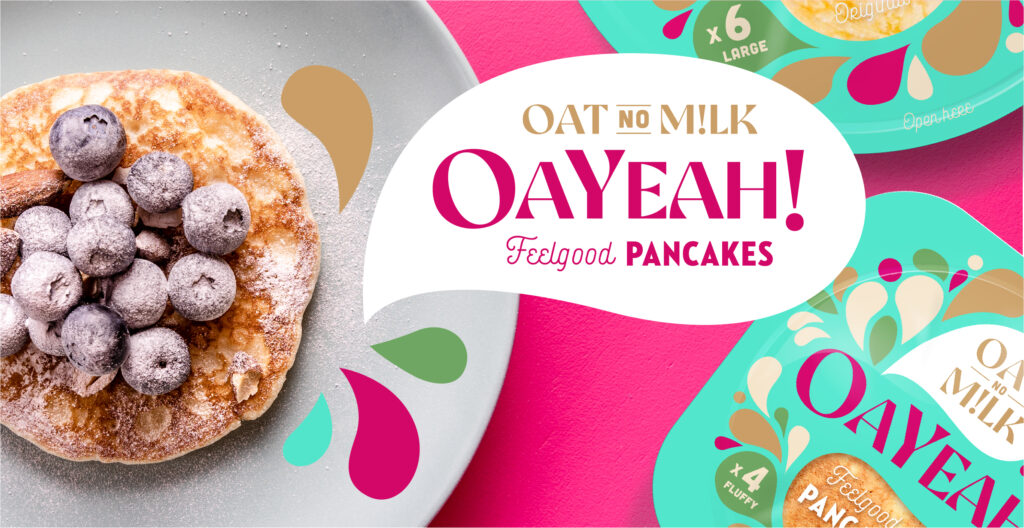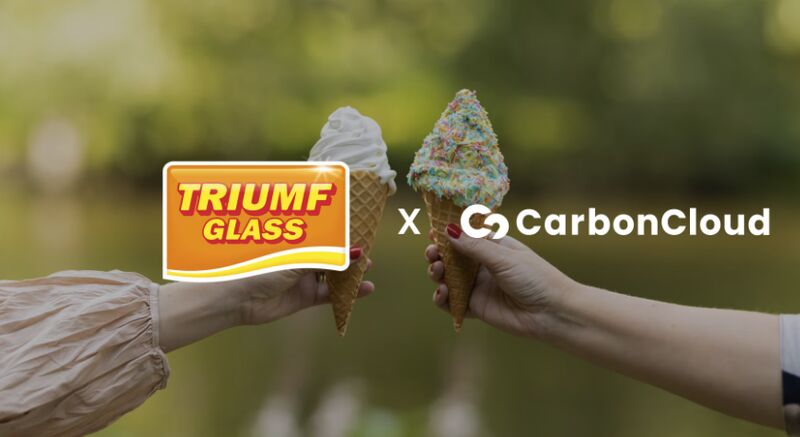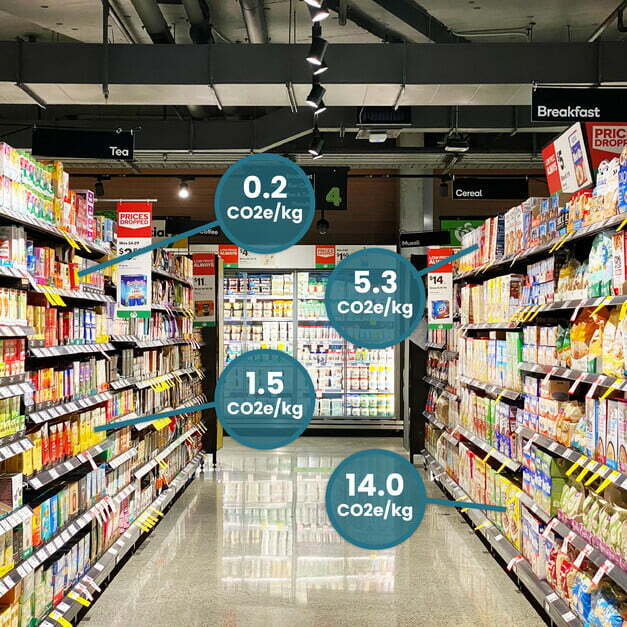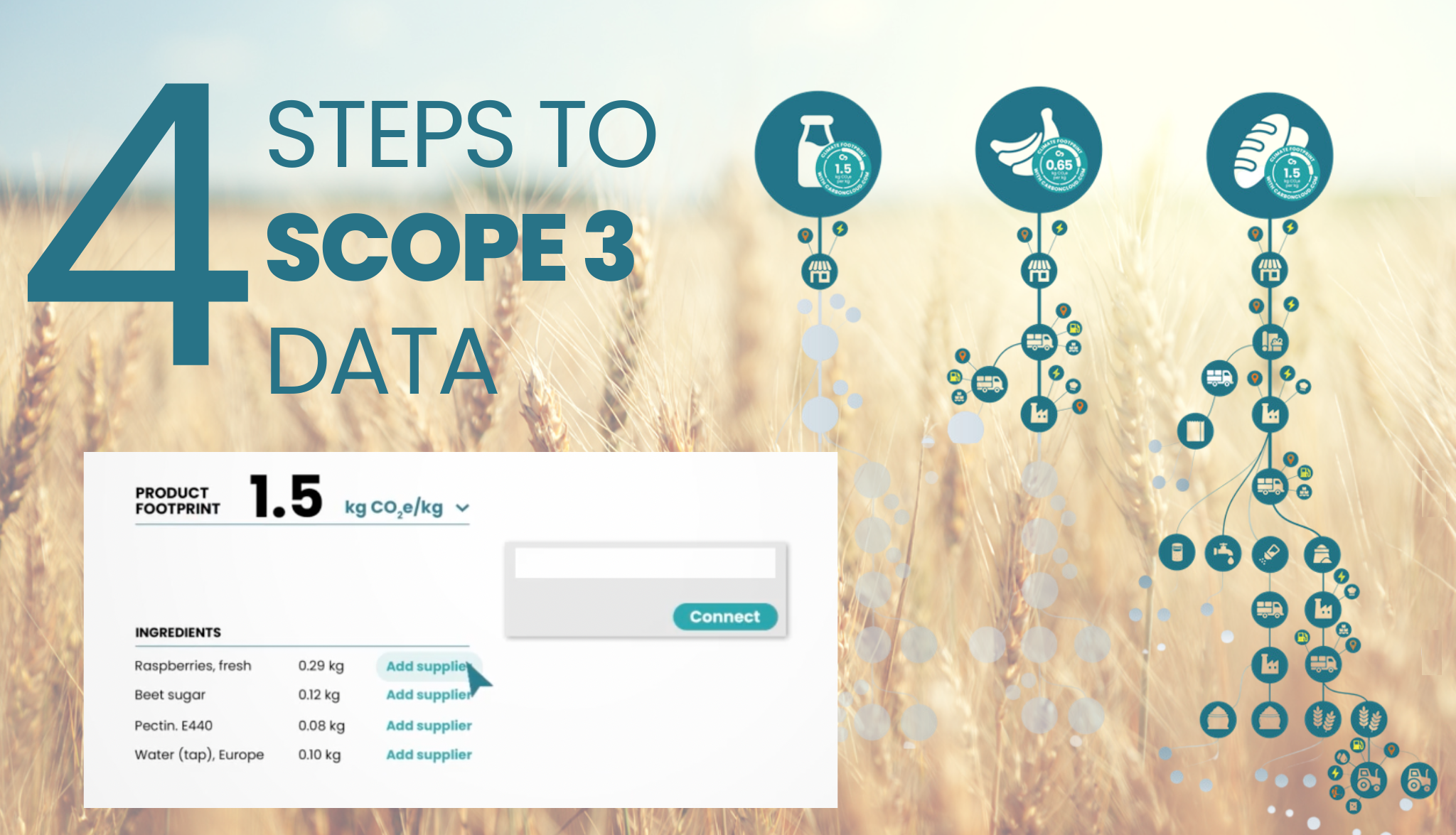Cérélia: High experience standards, one recipe switch, and a 30% reduced climate footprint
Cérélia is a global leader in fresh dough and ready-to-eat pancakes headquartered in France but expanding globally, in both production and distribution. Cérélia has 12 factories in total, 9 in Europe and 3 in North America, over 500 partnerships with retailers, the service and food industry, and 8 consumer-facing brands. Today we spoke with Mieke van Vugt, Marketing manager at the Dutch business unit, responsible mainly for the pancake business and the consumer-brand OaYeah!
Mieke and her team are taking climate footprint reductions seriously. Since they started working with CarbonCloud, the OaYeah! pancakes can now boast a 30% lower climate footprint – a result of motivation, dedicated work, and actionable climate data and insights.
Advancing in sustainability
Cérélia was inclined to find out everything about their footprint before it was cool. They started with their corporate footprint, a valuable first step that, as Mieke describes, didn’t fully fulfill the goal of making emissions work a core operation. That’s when Cérélia started working with CarbonCloud. Mieke tells us the before and after.

We were doing some basic LCA calculations in Excel always, which at the time was better than doing nothing. The goal of the calculations to understand the total footprint of our factories in Europe, so it was more on a corporate level. We had some big numbers but it's very difficult for people to really understand the impact or what the big number means.
Working with CarbonCloud on the climate footprint of our products made a big change for us as a company. It is easy to understand where the biggest impact is and really find out how we can tackle that impact. It is concrete, simple to work with, and well, you can win!”
Climate strategy – gamified!
Change comes from the inside and Mieke explains how this internal change of attitude towards the climate footprint of the product led to a different way of working.
It is very important to get climate consciousness in your company and for people to have some fun with it. The attitude towards sustainability before was an extra thing that took time from your core business, and it was more about reporting. Nowadays, it’s a fun project, it becomes real. You can score and get energy from that.”

The dedication to working with the climate footprint internally translated into core business and results. The OaYeah! page on Sustainability is one of the most thorough and vibrant we have seen – not to mention the actual reductions on the climate footprint on the product… yet.
If you spoke with product development two years about a plant-based shift, you’d hear “it’s not for me”, “it’s very difficult, “we have 100 projects going on”. Now they are all very enthusiastic. When they started working with the emissions map, they really understood that we can make a change. The taste gets better and better, the structure improves, and we learn a lot.”
What’s beyond climate transparency? Quantified emissions reductions
It wasn’t too long a wait to talk about Cérélia’s emissions reduction! Cérélia tackled the climate impact of their product from every possible angle, starting with their hotspots. Presently the pancakes can boast a 30% reduced climate footprint – and Mieke tells us what happened under the hood to bring this incredible result to whom it may concern*.
Newsletter to-go?
Our special today is our Newsletter, including snackable tips, hearty climate knowledge, and digestible industry news delivered to your inbox
1. A conscious but imperceivable ingredient shift
As mentioned in OaYeah!’s page, the ingredients for a traditional pancake with dairy products account for 60% of the climate footprint. Dairy milk became the primary focus for the first switch.
At this moment we don't use the cow milk but our homemade oat drink. Our next step is considering options for the eggs. And as we speak this week, we are having anexternal sensor-testing with consumers and I have big, big expectations.”
Mieke’s high expectations are as high as their sensory standard, making the switches in OaYeah!’s recipes a game-changer. But the real ambition is that a shift to climate-smart ingredients become so normal, that it is inconceivable by omnivores.
We really strive for a product that you don't even notice that there is no dairy. We set a certain level, so we test the product without mentioning that it's plant-based. It should hit the same level as any regular pancake otherwise, it's just not good enough.
I do think that we need to change our diets, but not oblige everybody to go 100% vegan. It’s finding a new balance with more plant based and less animal ingredients/proteins. Consumers are just buying pancakes, they don’t need to be conscious of every ingredient to serve them with a great product – and I think that that's just the future standard.”

2. The great packaging material trade-off
Mieke has a profound understanding of packaging, the waste system, and how it affects the climate footprint. From our part, in Mieke’s words we hear the reflections and challenges of every food producer.
But Mieke has three key solutions: Less material, conscious trade-offs, and advancement of the recycling system.
We of course try to do our best to switch to less packaging materials and mono materials. Consumers have the possibility to bring their waste to a recycling bin, but not all of it is recycled on the grade we need them to, let alone for circular use. Recycling needs the financial support to advance their innovations quicker.
–We collectively need to rethink how much packaging we need and avoid spoiling material.
Packaging materials are not endless, so we must be conscious. Therefore, I do think that material reduction is very important – We all win this way. If you just save 20% of your material, if you can go thinner and still have good protection of your product, is actually better. The truth is we need packaging to protect our products from food waste. If the product stays fresh for 1 day and ends up as waste, it is far, far worse than using the absolute necessary material for the product to stay fresh for 30 days.”
Of course, when it comes to both material reduction and material type trade-offs, each company needs to tailor its approach. Mieke walks us through the process of changing the packaging for one of their products.
We learned a lot using CarbonCloud. After some calculations we were shocked to find out that our frozen carton box products with just a bit of plastic in it had a far higher climate footprint per kg of product than our thicker, plastic-only flow pack and thermoformed packaging alternatives. Carton boxes for food often contain some plastic so it’s not fossil-free. Plus carton boxes have more empty space than a flowpack – more kg of product can be stacked on a pallet which improves the logistics measurements and in the end, the climate footprint of transportation per kg of product is reduced.”

Choosing plastic in the today’s narrative is not always the easiest sell – at least until we find good non-fossil alternatives that protect food as effectively as today. As we have also uncovered, the cons of plastic packaging for food have been painted fairly, but the benefits haven’t. Mieke is fully conscious of the trade-off.
There's a negative view on plastic and it is imperative that we invest in plastic recycling and as citizens recycle it so that it does not end up in the sea or in nature. I do believe that as a society we use more plastic than we need. We collectively need to rethink how much packaging we need and avoid spoiling material."
*…To whom it does concern
On pack, Cérélia communicates its systematic reduction work. OaYeah! Pancakes bear a proud -30% CO2e badge, comparing with none other but the previous version of themselves, as champions with high standards do. Believing in climate transparency, they have the full trail of the comparison, calculations, and approach on their website. But consumer communication is only one part of the story for Mieke. The approach with retailers was different and the results were astounding.
During the launch, we shared the absolute climate footprint figure with retailers and they were really enthusiastic. To be honest, it was one of the easiest retailer launches we have had. They also feel the pressure to reduce their footprint and in that, they need their suppliers – we are all part of a chain.”
What’s next for Cérélia? All 👏 the 👏 right 👏 things 👏. Regarding their emissions work, for Mieke it is complete supply chain transparency.
In a big future, we want to be able to see our suppliers and our complete chain. They are also developing with new ways of production or lowering their footprint. Having that information really shows you where your climate footprint is coming from.”
And looking outwards? Cérélia is ready to respond to the demand for delicious yet climate-smart pancakes in the food service and production industry.
We have quite some companies visiting us with requests for plant-based pancakes. The small fluffy pancakes are popular in food service as well and a lot of them are really into sourcing plant based. There, we want to go with the 100% plant-based pancakes and skip the in-between step directly!”
Related Posts
Triumf Glass boosts its sustainability work through collaboration with CarbonCloud
Triumf Glass and CarbonCloud partner up towards a more sustainable future. Through CarbonCloud’s research-based software service, Triumf Glass boosts the transparency of its carbon footprint all
Little Freddie: A climate footprint growth spurt
Think of an adult foodie brand and 100 come to mind. Now think of a baby foodie brand – is it taking longer? We hand you the answer: It’s Little Freddie! When it comes to baby food, they believe o
Climate footprint labels: Why we use the number – and why the entire food industry will too.
The quantitative and specific climate footprint label may still be perceived as disruptive but we are certain that there simply isn’t a way that is more informative and transparent to communicate th
4 steps to Scope 3 data: Roadblocks & how to overcome them
Food & beverage industry + Emissions + Elephant in the room = Supply chain data. Upstream Scope 3 data is a problem the entire food industry has identified but no one has successfully solved – y







